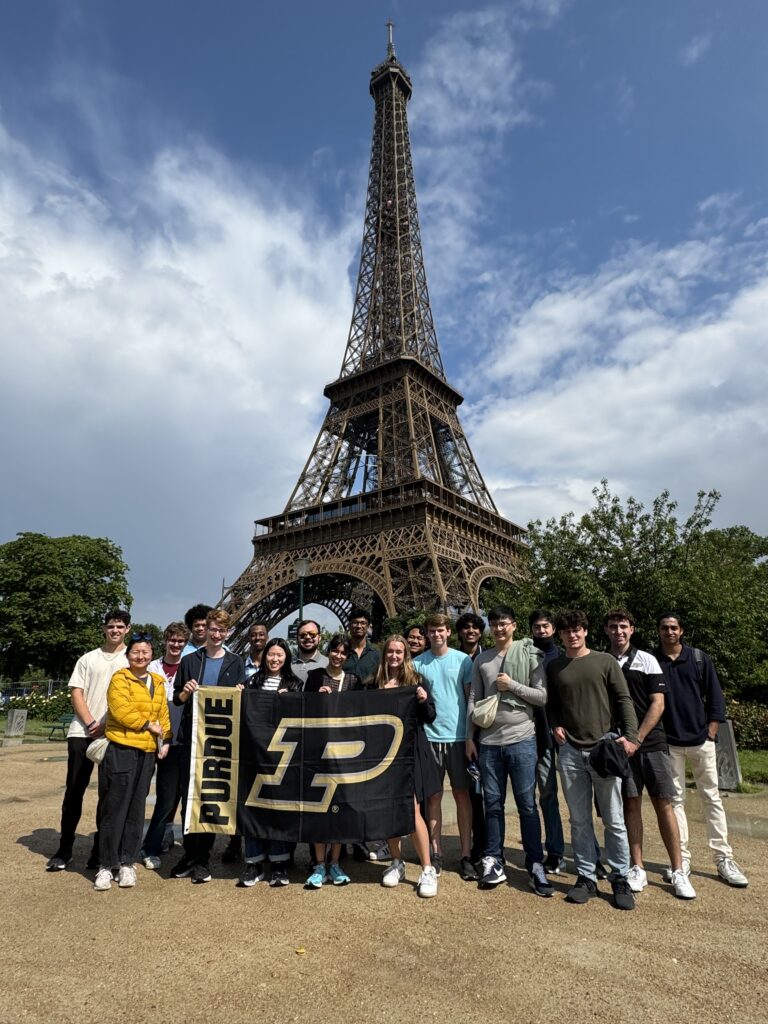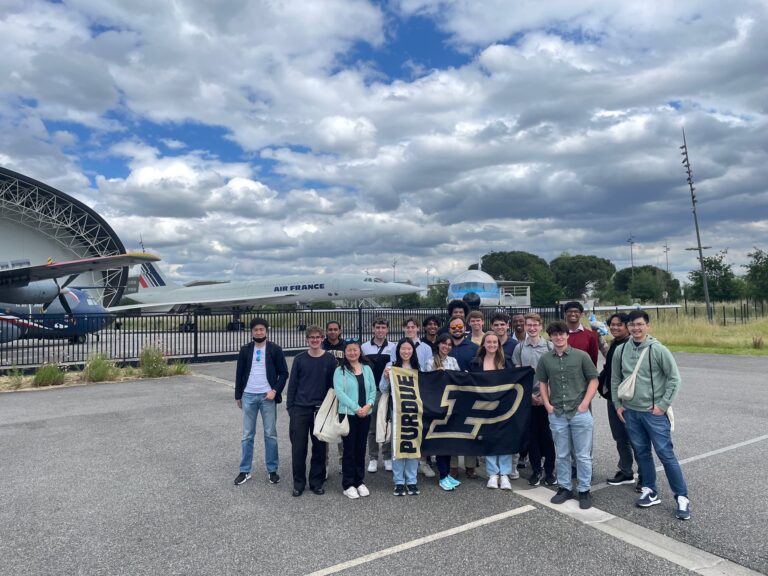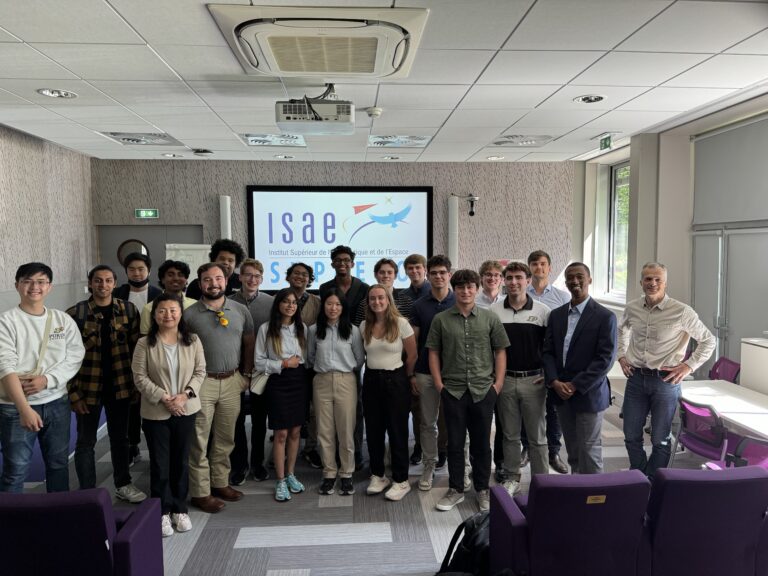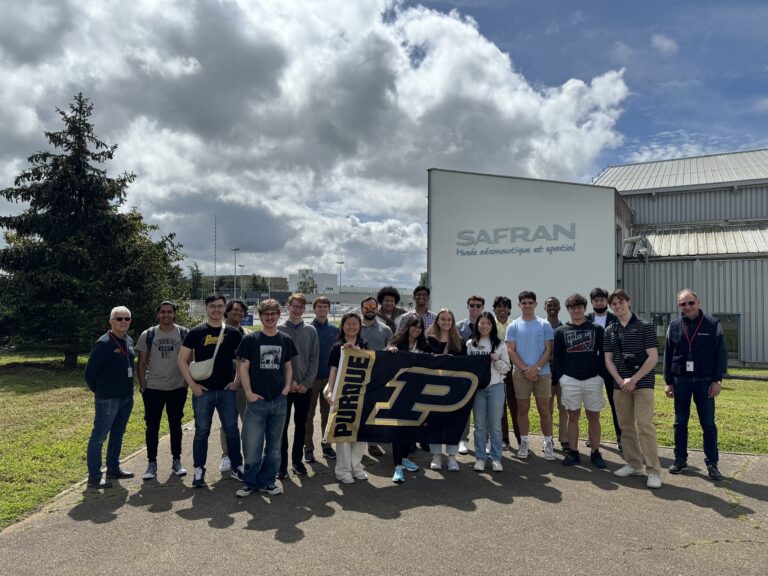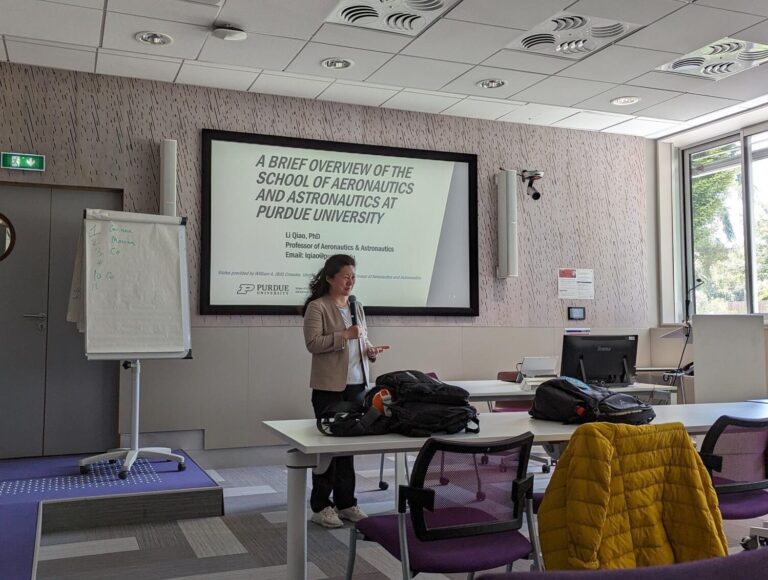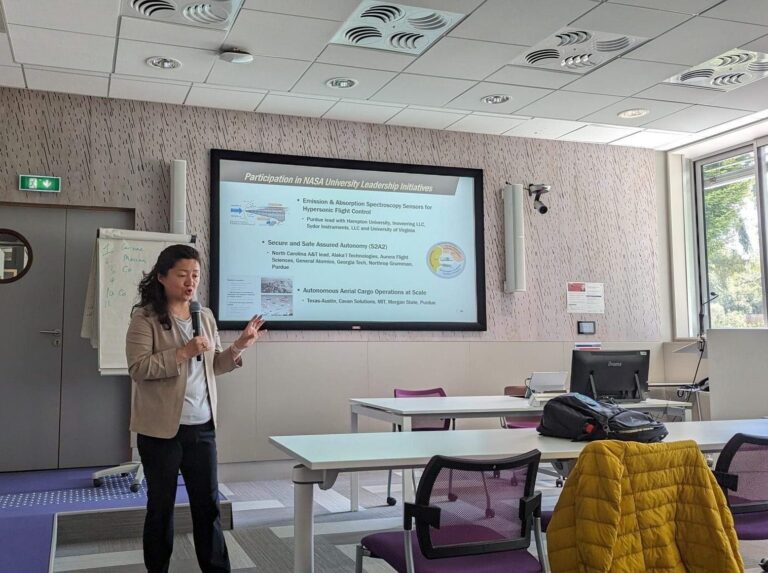Teaching at Purdue
Li Qiao is a professor in the School of Aeronautics & Astronautics, at Purdue University and also holds a courtesy appointment in Mechanical Engineering. Professor Qiao’s research is focused on chemical propulsion, alternative fuel, and advanced ignition methods. Besides her research work, she teaches several courses in the areas of propulsion, and aircraft design, some of which are listed below:
List of courses:
The course is intended to serve as an introduction to airbreathing propulsion systems. Students are given a basic background in combustion, one-dimensional compressible internal flows, and the thermodynamics of Brayton-cycle engines. In addition, the students are provided with more detailed discussion of the major components in an airbreathing engines ranging from inlets and compressors to combustors, turbines, and nozzles. Upon the completion of this course students will have the ability to predict the performance and conduct preliminary design of jet propulsion systems and their components. Download Syllabus (Spring 2023)
AAE535, “Propulsion design, build, and test,” is a unique and intensive learning experience based on the propulsion heritage at Purdue and the test and fabrication capabilities available to students.
In providing a means to complete a design process, the course provides the following information:
- Derivation of design requirements from mission objective to detailed components;
- Standard methods for thermostructural, life, performance, and combustion stability design analysis;
- Tools to develop experimental procedures as well as fabricate and test the designed propulsion systems. Download Flyer of AAE 451 and AAE 535 Fall 2022
Practical propulsion systems operate at high pressures, e.g., the chamber pressure of the RD 170 family developed by the Soviet Union in 1970s, one of the most powerful liquid-fueled rockets, is around 245 bar. As a result of the high pressure, the injected fuel may be at transcritical or supercritical state during the mixing, evaporation and combustion processes. Modeling these processes has serious challenges due to the non-equilibrium and unsteady nature of the phenomena, lack of a physical interface, and departure from the ideal gas behavior. This course will focus on the thermodynamics of non-ideal gases with applications in high-pressure propulsion systems such as rockets, gas turbines and internal combustion engines. Topics include basic concepts of gas kinetic theory and statistical thermodynamics, intermolecular potential and molecular dynamics, real-gas equation of state (EOS) for pure fluids and mixtures and mixing rules, phase diagrams and equilibria, vapor-liquid equilibrium calculations, and critical enhancement phenomena. The course will also discuss recent progress in understanding and modeling high-pressure chemical reacting flows, including supercritical droplets, jets and flames, and combustion chemistry at high pressures. Download syllabus (Fall 2020)
Course Description
AAE 590 Aerospace Propulsion is designed to offer a thorough treatment of both the theory and applications behind current and future aerospace propulsion systems. It can serve as a prerequisite to AAE538 and AAE539 for students whose major or minor area of concentration is propulsion. It can also serve as an introductory course for students whose concentration is not propulsion but are interested in learning propulsion. Additionally, it is one of the foundational courses for the new Hypersonics Graduate Online Certificate Program.
Propulsion systems convert some form of stored energy or energy that is freely available in the environment into kinetic energy to produce thrust. Since the energy involved is used to do work, the study of propulsion systems is based on concepts from thermodynamics. The course thus begins with a review of essential thermodynamics, which we then use to analyze thermodynamic cycles that form the basis of propulsion systems. In the vast majority of propulsion systems, the energy is stored in chemical bonds in a fuel and an oxidizer, and released when these undergo a chemical reaction to produce heat. Such “chemical propulsion systems” thus involve combustion chemistry, which will be covered in the course. In many cases, the oxidizer is available in the surrounding atmosphere and only the fuel must be carried by the flight vehicle; such systems are referred to as “air-breathing propulsion systems”. For other systems, especially those intended for use outside the atmosphere, both the fuel and oxidizer must be carried by the vehicle; the resulting system is then referred to as a “rocket propulsion system”. Both these types of systems will be covered in detail in the course. We will cover both the analysis of such systems as well as their practical engineering implementation and integration into propulsion system components and complete propulsion systems. (Download Syllabus Fall 2023)
Learning Outcomes
On completing this course, the student shall be able to:
- Demonstrate a knowledge of conventional propulsion system types, their form, the functions of their components, and the applications for which they are suited.
- Calculate the properties of 1D compressible flow with area change, energy exchange (heat and work), friction, and shocks.
- Apply laws of conservation and the 2nd Law of thermodynamics to calculate thrust and specific
- Calculate performance and efficiency of ramjets, turbojets, turbofans, turboprops and rockets and their components including inlets, compressors and pumps, combustors, turbines, and
- Derive propulsion requirements from mission requirements and perform top-level sizing calculations of ramjets, gas turbine engines, liquid rockets, and solid rockets.
Sustainable aviation is essential to the global goal of achieving carbon-neutrality by 2050. In this course, we will start by exploring the fundamentals of aircraft propulsion systems and their environmental impacts. We will subsequently move on to explore potential solutions, with a focus on three aspects: (1) alternative fuels; (2) hydrogen technologies; and (3) electrified aircraft. Upon completion of this course, students will be equipped with the latest knowledge of technical solutions and possibilities of modern engineering to make aviation more sustainable. Moreover, the course will also encourage critical and creative thinking about the future of aviation and how you can play a role. Additionally, students will gain exposure to European sustainability efforts through industrial visits to Airbus Space & Defense and Saft Batteries. They will also be able to explore cultural sites across France, allowing them to truly experience the French art de vivre. (Download Flyers)
Sustainable Aviation Short-Term Study Abroad Course (May 14-29, 2024)
A group of Purdue University students traveled to France for a short-term study abroad program focused on sustainable aviation. Led by Prof. Li Qiao, the course covered innovative aviation technologies and sustainability practices. The video features student testimonials sharing their personal experiences, friendships, and unforgettable memories from this incredible learning journey in May 2024.

